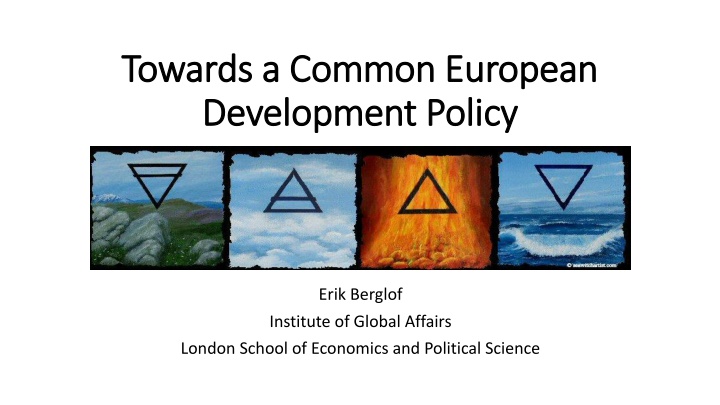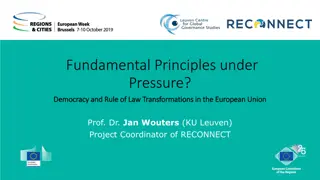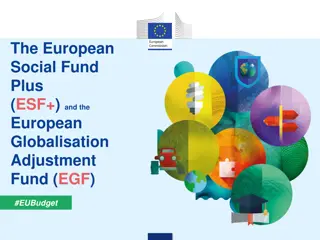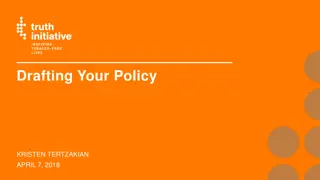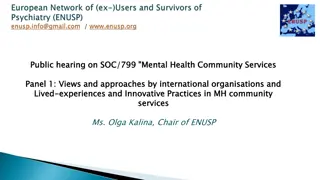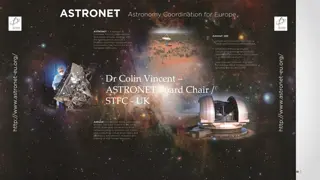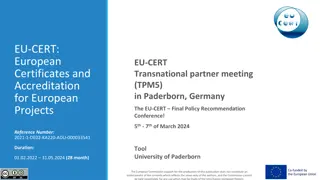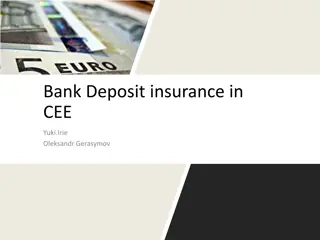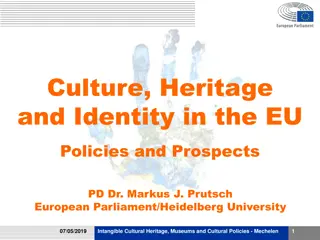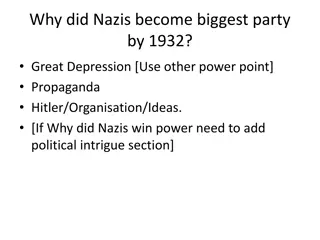European Development Policies and Challenges
Broader economic sovereignty context, global sustainable development challenges, transformation of development finance, and European development finance architecture. Emphasizing the need for a common European development policy and addressing global issues in sustainable development. Recognizing the evolving multipolar world and the role of European institutions in global finance.
Uploaded on Mar 13, 2025 | 3 Views
Download Presentation

Please find below an Image/Link to download the presentation.
The content on the website is provided AS IS for your information and personal use only. It may not be sold, licensed, or shared on other websites without obtaining consent from the author.If you encounter any issues during the download, it is possible that the publisher has removed the file from their server.
You are allowed to download the files provided on this website for personal or commercial use, subject to the condition that they are used lawfully. All files are the property of their respective owners.
The content on the website is provided AS IS for your information and personal use only. It may not be sold, licensed, or shared on other websites without obtaining consent from the author.
E N D
Presentation Transcript
T Towards a Common European owards a Common European Development Policy Development Policy Erik Berglof Institute of Global Affairs London School of Economics and Political Science
The broader economic sovereignty context The broader economic sovereignty context (Leonard et al., 2019) Increasing intermingling of geopolitical and economic spheres China (BRI) and the US (financial sanctions) Linkage across policy areas Europe s economic sovereignty at stake EU needs an economic sovereignty policy Redefine its concept of sovereignty Decide which instruments it wants to use to defend it Development finance architecture a key element
Global challenges for sustainable development Global challenges for sustainable development Climate Biodiversity Pandemics Forced dislocation ... => global (and regional) responses in addition to national ones => urgent and on a completely different scale than before => need a global system that works as a system (for all)
Global development finance in transformation Global development finance in transformation Multipolar world (economic weight shifting, more south-south...) Decentralisation of resources from global to regional and national Global fragmentation new institutions (AIIB, NDB, BRI, US DFC,...) Sustainable Development Goals severely underfunded Aid fills a sixth of financing gap in 48 underresourced countries USD 50bn (50% infrastructure + 50 % social sector) not enough Private resource mobilisation needed (limited in fragile + low-income states) Populism and trust deficit undermine multilateralism
European Development Finance Architecture European Development Finance Architecture USD76bn = 0.5% of gross national income and 57% of global aid Intellectual leadership(?), but limited impact and visibility (cfr BRI) Many players, but risk of fragmentation More than 30 development banks and agencies 19 development finance institutions, in addition to EIB and EBRD 14 (non-banking) technical cooperation agencies Member States plan more Poor coordination at EU level (DG Near, DEVCO and ECFIN + other DGs)
EU EU- -level institutions level institutions different, but overlap different, but overlap EIB strong experience from sovereign lending and large-scale, low- risk private sector operations, but not set up to crowd in private finance. Limited presence on the ground. Policy taker with little development experience and unsuitable risk practices (not in DNA) EBRD most experience from private sector and sub-sovereign lending; strong financial innovation capacity; a development institution with strong presence on the ground and suitable risk practices; not same level of EU control; scalability of business model in fragile states?; non-EU shareholders Neither have significant presence in countries with large fragilities Neither can currently effectively deliver on education and health
Neighbourhood, Development, and Neighbourhood, Development, and International Cooperation Instrument (NDICI) International Cooperation Instrument (NDICI) Increase policy coherence + country ownership Integrate instruments and how they are implemented (grants etc.) European Fund for Sustainable Development Plus (EFSD+) Common platform with open architecture International financial institutions key partners at EU and national level More flexible respond to changing needs
A European system that delivers A European system that delivers Development impact (additionality, use private sector, policy reform...) Policy coherence (across institutions and projects, global impact...) Institutional design Effective decision-making (governance, shareholdings, incentives...) Right set of instruments (for risk-taking, fire power, policy engagement...) Coordination of system (with other institutions + recipient ownership) Technical expertise for development (experience, private sector...)
European Sustainable Development Bank: Three options European Sustainable Development Bank: Three options EBRD New institution co-owned with the Commission, EIB, EBRD and others EIB subsidiary
European Development Finance Architecture Stronger common European vision for development finance European Commission: NDICI and EFSD+ open-architecture platform European Sustainable Development Bank Strengthen cooperation of national development finance institutions
Four Elements Initiative Four Elements Initiative Europe s response to the Belt and Road Initiative Green ecological transition Inclusive inequality, Africa, gender Growth growth and productivity focus Multilateral partnering with the multilateral institutions
